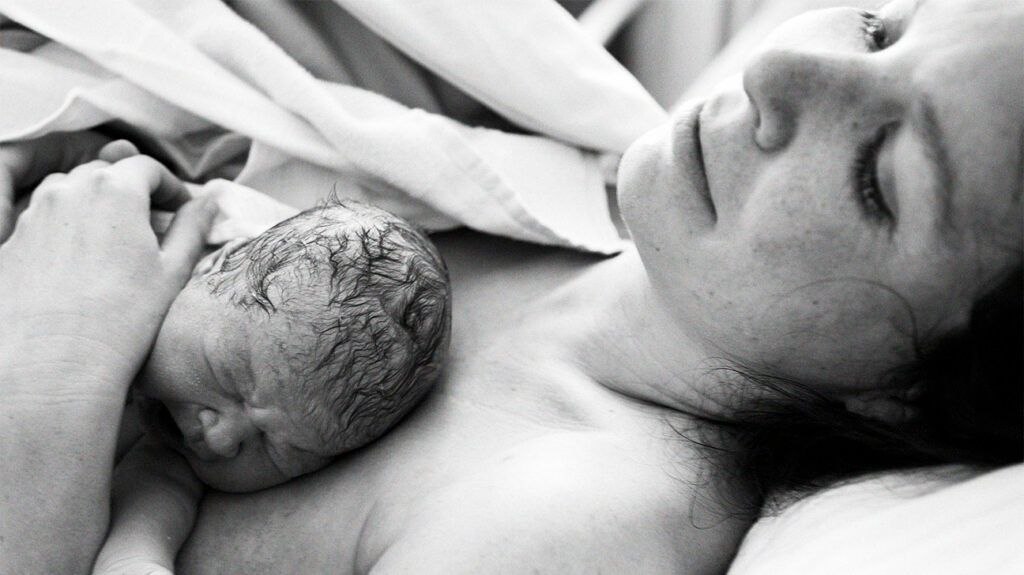Newborns can experience headaches, reflected in continuous crying, feeding issues, and sleep changes.
It can be challenging for caregivers to identify headaches in newborns due to their inability to articulate discomfort verbally.
A newborn with a headache may cry persistently or display fussiness that does not respond to typical soothing methods, such as feeding, changing, or rocking. The crying can be intense and prolonged, indicating that the baby is in significant discomfort. There may also be changes in feeding and sleeping patterns.
Caregivers can try to understand these sometimes subtle signs to recognize potential headaches and seek medical attention when appropriate.
This article covers headaches in newborns, offering insights into the signs, causes, and management strategies.

Headaches are among the
Healthcare professionals find it challenging to confirm if newborns have headaches because babies cannot talk. However, research suggests that infants can experience headaches and migraine.
Children with migraine are more likely to have experienced symptoms related to the gut-brain interaction during infancy, including:
- colic
- regurgitation
- abdominal migraine
- cyclic vomiting syndrome
Learn more about migraine in children.
Caregivers must carefully observe a newborn’s behavior and physical cues to identify headaches since they cannot verbalize pain.
Common signs that
- persistent crying or fussiness
- changes in feeding patterns
- disturbed sleep or difficulty falling asleep
- irritability and restlessness
- sensitivity to light or sound
These signs can be subtle and may overlap with other conditions, making it crucial to consult a pediatrician for an accurate diagnosis.
Learn more about headaches in children.
Headaches in newborns may differ significantly from those in adults due to differences in anatomy, development, and communication abilities. However, these are only theories, as there is little information or evidence about migraine in newborns.
Migraine symptoms in children
Unlike the pulsating pain that adults often feel, children’s migraine tend to be non-pulsatile and are generally shorter in duration, sometimes lasting less than 30 minutes.
Additionally, the causes of headaches in newborns may differ from those in adults, with more emphasis on physical and environmental factors rather than stress or tension.
Learn the difference between headaches and migraine.
Several factors can contribute to headaches or headache-like symptoms in newborns, including:
- Birth trauma: Physical stress during delivery can lead to head discomfort.
- Infections: Conditions
such asTrusted Source bacterial or viral meningitis, encephalitis, brain abscesses, and ear infections can cause head pain. - Hydrocephalus: Hydrocephalus is a fluid accumulation in the brain that can increase pressure and cause headaches.
- Environmental factors: Bright lights, loud noises, or strong smells can trigger discomfort.
- Dehydration: Insufficient liquid intake
can causeTrusted Source headaches and other symptoms.
Learn more about a dehydration headache.
Treating discomfort or pain that may be headaches in newborns involves addressing the underlying cause and providing comfort to
- Consult a pediatrician: It is crucial to seek a pediatrician’s expertise to diagnose the cause of the apparent headache accurately. Based on the evaluation, they can recommend a treatment plan tailored to the baby’s needs, including addressing any medical conditions or adjusting feeding practices.
- Pain relief: Sometimes, the pediatrician may recommend appropriate pain relief for the baby. It is essential to follow their instructions precisely and avoid over-the-counter medications not explicitly advised for infants.
- Create a calm environment: Minimizing exposure to loud noises and bright lights can help soothe the baby. Dim lighting and soft, calming sounds or white noise can also create a more relaxing environment.
- Gentle massage: Lightly massaging the baby’s head, neck, and shoulders can help relieve tension and promote relaxation. Doctors recommend gentle, circular motions with minimal pressure. This bonding activity also provides comfort through physical touch and parental presence.
- Hydration and nutrition: Maintaining regular feeding schedules and ensuring the baby is adequately hydrated can help prevent dehydration-related headaches.
It may not be possible to prevent all headaches in newborns. However, minimizing potential triggers and maintaining overall health may help. Prevention tips include:
- Maintaining a routine: Consistent feeding and sleeping schedules can reduce stress and discomfort.
- Creating a comfortable environment: Ensuring the baby’s room is quiet, dimly lit, and free from odors can prevent irritation.
- Monitoring health: Regular check-ups with a pediatrician can help identify and address potential health issues early.
Learn some tips about how to help a baby sleep well.
Newborns can experience headaches. However, healthcare professionals may find diagnosing them challenging as babies cannot communicate verbally. Therefore, caregivers should watch for indications of headaches, such as persistent crying, changes in feeding and sleeping patterns, and other signs of discomfort.
Consulting a pediatrician is essential for proper diagnosis and treatment. They can guide treatment and advise on at-home care measures to provide effective relief and support the infant’s well-being.


